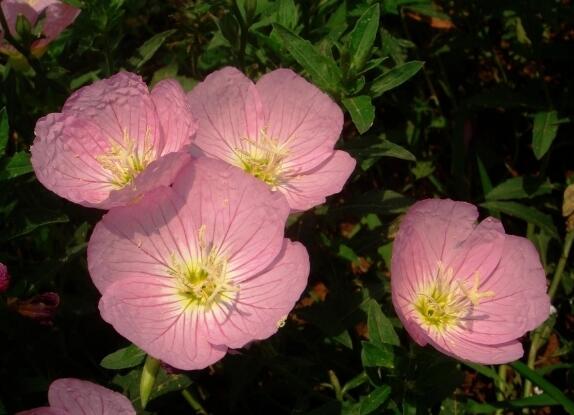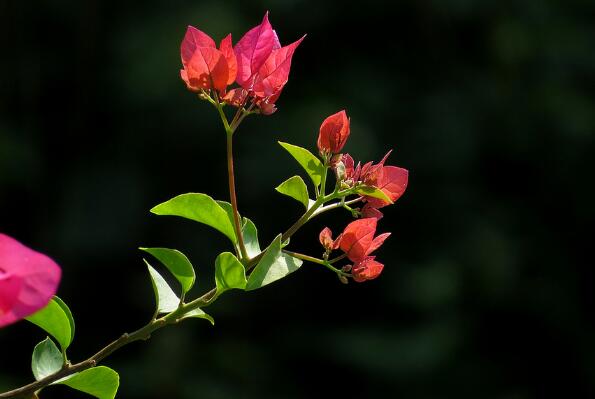How do daisies grow bugs? disease and pest control of daisies / 3 insect pests 2 diseases
Daisy is a very ornamental plant, and it is regarded as the national flower in Italy. However, no matter how high the ornamental flower is, if there are diseases and insect pests, it will still affect its overall beauty, and in serious cases, it will lead to plant death. What about daisies growing bugs and how to control daisies' diseases and insect pests? Next, the editor will take you to learn about it.
What to do with daisies and worms / targeted treatment

With regard to the question of what to do with daisies and insects, first of all, we need to find out what kind of diseases and insect pests appear. As long as we find out the cause, it is relatively easy to target. In the following, there are the characteristics and control methods of all kinds of diseases and insect pests. Friends who want to know can move on.
Control of diseases and insect pests of daisies
1. Pest of longicorn beetles
In the pest control of daisies, longicorn beetles are more common, this pest is generally recommended in 6-11mm, the body is cylindrical, the color is black. At first, it will lurk in the root of the daisy, and then gradually nibble upward from the root, and in the later stage, it will make the plant die due to lack of nutrients.
Prevention and control methods: the best time to control this pest is when we split the daisy, when we need to dig out the roots of the plant, we can check if there is such a pest. If it is found that we can use 200 times of 50% dichlorvos EC for direct spraying.
two。 Cotton aphid pest
Cotton aphid mainly harms the leaves of daisies, which will curl at the initial stage, gradually become obscene with the passage of time, and finally spread to the plant, resulting in wilting and death.
Control methods: when you encounter this pest, you must deal with it as soon as possible. the most direct method is to spray the whole plant with 1000 grams of methyl phosphate EC, which is usually sprayed once every 7-12 days, and the pest can be eliminated after two or three times.
3. Large green leafhopper pest
The size of the leafhopper is generally between 7 and 8mm, with a brown head and a cyan body. This pest mainly harms the leaves of plants, it will suck the sap of the leaves, causing the leaves to yellowing and wilting, and will gradually spread with the passage of time.
Control methods: to control this pest, many people will choose to use light to trap and kill, but this method is difficult to completely eliminate this pest. The most direct and effective method is that we can spray this pest directly with 1000 times of methamidophos EC.
4. Anthrax disease
Anthracnose is a disease that mainly harms the leaves of daisies. In the early stage of the disease, there will be many small green spots on the leaves. With the passage of time, this disease will gradually expand and spread.
Prevention and control methods: this disease must be prevented and treated at the initial stage, and it will be difficult to treat if it takes a long time to lead to the spread of bacteria. We can use 1500 times of 50% carbendazim wettable powder to spray the plant to control it.
5. Grey mold disease
Botrytis cinerea is a fungal disease that occurs in many plants, which mainly harms the leaves and petioles of daisies, which are not gray-white when they occur, and there are many irregular water spots. In the end, it will cause plants to rot and die.
Control methods: the most common occurrence of this disease is when plants are overwintering and summer, so we must pay attention to this event. For the prevention and control of this disease, we can spray with 50% isobarbazide diluted by 1000-1500 times, usually once every 5 days. It can basically be cured after 1 or 2 times.
Control methods of main diseases and insect pests of daisy
Sclerotinia sclerotiorum, leaf spot, short-forehead negative locust and small green grasshopper are common.
Control methods: Sclerotinia sclerotiorum was sprayed with 50% topiramine wettable powder, and short-forehead negative locusts were sprayed with 50% fenitrothion EC 1OO0.
Disease Control of Daisy
Withered leaf disease of daisy
Leaf blight mostly occurs from leaf edge and leaf tip, and the disease spot is irregular from small to large, reddish brown to grayish brown, and the disease spot is continuous into a large withered spot, and the dry area is up to 1 inch 3-1 inch 2 of the leaf, and there is a deeper zone on the edge of the disease spot. In the later stage, some small black spots are produced on the disease spot.
Specific symptoms: the diseased leaves turned yellow at the initial stage, and the yellow part gradually turned brown and necrotic. From the local extension to the entire leaf vein, showing brown to reddish brown leaf edge disease spot, the edge of the disease spot wavy, dark color. The boundary of the disease key is obvious, and sometimes there are shallow yellow bands with different width and width on the outer edge of the disease key, and then the disease spot gradually extends to the base of the leaf until the whole leaf turns brown to grayish brown. Subsequently, black villi or black dots appear on the back or front of the diseased leaves.
Chrysanthemum seedling catchment disease
The disease can occur after the seedlings have not been unearthed or after emergence. When unearthed, the disease occurred, the embryonic stem and cotyledons rotted; after unearthed, the seedlings became sick, the base of the young stem showed waterlogged disease spot at the beginning, then turned brown, constricted into a linear shape, the seedlings fell to the ground and died, and the cotyledons did not wither at the time of death, and they were still green. Under the condition of high temperature and humidity, a layer of white cotton-like hyphae can grow in the topsoil near the diseased plant.
Grey mold of daisy
The seedling of Botrytis cinerea is light in color, the leaves and petioles are gray-white, water-stained, the tissue softens to rot, and there is gray mold on the surface when the humidity is high. Most of the young stems were irregularly soaked in water at the base of the petiole, which soon became soft and rotten, constricted or collapsed, and finally the diseased seedlings rotted and died of wilt.
Brown spot of daisy
Fungal disease, the lower leaves began to occur, gradually spread upward, the initial stage is round or oval, purple-brown, the later stage is black, the diameter is 5-10mm, the boundary is clear, serious disease spots can be connected into pieces, so that the leaves withered and yellow fall off, affecting flowering.
Anthracnose of daisy
The disease infects leaves of daisies. At the initial stage of the disease, small chlorotic spots appeared on the leaves, and gradually enlarged to form round, semicircular or oval spots. The disease spot is light brown to grayish white, with reddish-brown rings on the edge. Under moist conditions, a pink myxospore disk appears on the spot. Anthrax occurs from April to June. The pathogen overwintered in diseased leaves with conidia and was transmitted by wind and rain.
Disease control methods of daisies
Prevention and treatment should give priority to prevention, spray targeted drugs and new high-fat film, improve the effective composition rate of pesticides, not afraid of sun exposure and evaporation, can adjust the absorption of water-saving, drought and rain prevention.
During cultivation, close planting should be avoided and cool environmental conditions with ventilation, ventilation and sufficient light should be maintained as far as possible, otherwise the plant will grow thin and overgrown.
Keep clean, find infected plants, leaves, must be removed and cleaned at any time. When the disease occurs, chemical control measures should be taken immediately.
- Prev

What to do with the growing insects of evening primrose, pest control of beautiful evening primrose / 2 insect pests and 2 diseases
Evening primrose is a kind of plant with high ornamental value, which can be seen in many gardens and flower beds in our country. However, no matter how beautiful flowers encounter diseases and insect pests, there will still be phenomena such as yellowing and wilting, which will destroy its beauty as a whole. What about Evening Primrose with worms?
- Next

What about the long insects of triangular plum? pest control of triangular plum / 2 insect pests and 3 diseases
Triangular plum, a beautiful plant, is kept at home by many flower friends. On the Internet, many people who raise triangular plums say that they rarely grow worms, but in fact, they are talking about veterans! If you are a novice, perhaps because some aspects of the work is not in place, the bug will come to the door, then what about the triangular plum bug?
Related
- Fuxing push coffee new agricultural production and marketing class: lack of small-scale processing plants
- Jujube rice field leisure farm deep ploughing Yilan for five years to create a space for organic food and play
- Nongyu Farm-A trial of organic papaya for brave women with advanced technology
- Four points for attention in the prevention and control of diseases and insect pests of edible fungi
- How to add nutrient solution to Edible Fungi
- Is there any good way to control edible fungus mites?
- Open Inoculation Technology of Edible Fungi
- Is there any clever way to use fertilizer for edible fungus in winter?
- What agents are used to kill the pathogens of edible fungi in the mushroom shed?
- Rapid drying of Edible Fungi

